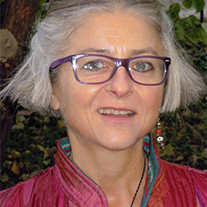Four new brochures how to protect pollinators in four different agro-ecosystems
Published on: April 21, 2021, Submitted by Laura Becker on: April 12, 2021
For which crops are bumblebees or mason bees effective? What do these wild pollinators need for nesting to build a strong future generation? How can farmers enhance their fields to sustain wild pollinators? These and other questions are tackled in the new brochures. The Arabic brochures use the Arabic names of species to make it easier for farmers.
FAP (oasis)
The new brochures for four different ecosystems complement the general guide on Farming with Alternative Pollinators (FAP) for farmers (English, Arabic), which we prepared a year ago. The brochure for oasis for instance explains main challenges for pollinator conservation in such sites. The brochure shows for instance domino bees and how they nest. They are solitary cuckoo-bees occupying the nests of banded bees. The conspicuously marked bees are very effective for cucurbites, okra and vegetables.
In the semi-arid region the challenges to protect pollinators are quite different. Crop diversification for instance is needed, as large areas are covered by monocultures of cereals or olive orchards. Farmers around Settat are lucky having bumblebees in their fields. These are social bees nesting in the ground. It is very important to protect the queens, otherwise these very effective pollinators, which are robust to weather constraints, cannot regenerate. If the queen is killed in the first weeks, 200-300 offspring bumblebees will never appear and work.
In several brochures you will see furrow bees. The females have to dig very deep to lay their eggs. Take care: chemicals accumulate in soil and the digging female needs to remain in good health to do her job.
All brochures provide some field designs with marketable habitat enhancement plants (MHEP) and information on the best seeding time for main crops and MHEP. Based on these examples, farmers can start experiments using the FAP approach, develop such diversified planting schemes themselves for more crops – and gain better yield and income per surface. Have a look at this short video and listen to a Moroccan farmer explaining why knowledge on pollinators matters.
Farmers in Morocco can contact ONCA, as ONCA extensionists received trainings to assist farmers further.
Download the brochures in English or Arabic:
FAP in semi-arid regions English Arabic
FAP in regions with adequate rainfall English Arabic
FAP in mountainous regions English Arabic
Photos from left to right:
1. Furrow bee - nesting (semi-arid regions)
2. Bee hotel in flowering orchard (mountainous regions)
3. FAP-planting scheme for eggplant (region for adequate rainfall)



